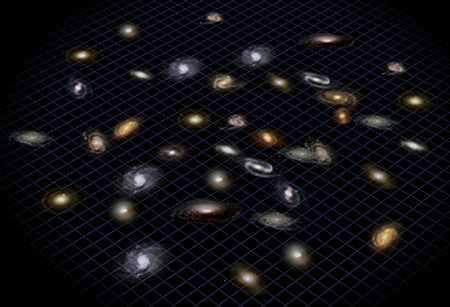On the Dark Side (Part II)
Just as astronomers were getting used to the idea of not knowing what dark matter is, they got a completely different surprise at the end of the 20th century. Instead of slowing down after the Big Bang, the expansion of the Universe was found to be accelerating. Astronomers quickly did what they always do when they come up with something mysterious: they gave it a name. Now, we call whatever it is pushing the Universe apart "dark energy", but the truth is no one knows what it is. But just as with dark matter, not all hope is lost. By using telescopes like Chandra, scientists are beginning to examine what this dark matter really is.

Dark energy was originally discovered by optical studies of supernovas and work continues in that area. But dark energy is a big mystery - perhaps the biggest in all of physics - and so you really want to study it and attack it with everything possible. Clusters of galaxies are great tools for studying dark energy for a bunch of reasons. The first is that you can use them to get good estimates of how much matter there is in the Universe. This helps in working out how much dark energy there is. They can also be used as distance indicators, so people can cross-check the work done with supernovas on measuring the expansion of the universe. New Chandra results have just come out recently using this technique.
While some work on dark energy has already been done, there's still so much more to learn. But what’s next? For dark energy, very interesting studies are currently underway to look at how galaxy clusters grow with time. It looks like galaxy clusters haven't grown very much over the last 6 or 7 billion years. It could be that dark energy is limiting the growth of these objects in recent times. So, this is another way to look at dark energy and it's completely independent of techniques that measure distances and the expansion of the Universe.
It seems like every time we make a new discovery about the Universe, it leads to so many new questions. At this point in history, questions like "what is dark matter?" and "what is dark energy?" remain wide open. Thankfully, we've got tools like Chandra to help us try to answer some of these questions. In doing so, we not only expand our understanding of the Universe we can see, but also for the Universe we can't.
-Megan Watzke & Peter Edmonds, CXC
(Continued from Part I)
